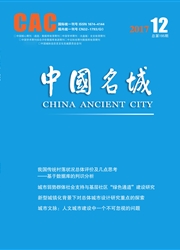

 中文摘要:
中文摘要:
京津冀一体化是多年来学界讨论的话题,专家们都在为京津冀的经济发展进言献策,在区划融合、产业对接、空间演化、扩大合作、存在问题等很多方面提出了观点。京津冀在历史上属于同一行政区划,新中国成立以后,天津和北京先后独立为直辖市,自此京津与河北省在经济发展状况上就逐渐出现了较大的发展差距,环京津区域出现了一个"环京津贫困带"。在快速城市化进程中,京津与河北省都看到了京津冀一体化发展的重要性,京津冀一体化开始从理论走向实践。京津周边的保定、唐山、承德和张家口也都提出了"对接京津"的发展思路。由于河北省在南北方向呈长条状,所以在一体化进程中需要采取"分步走"的发展措施,通过以点带面、由小到大逐步发展的方式,推动全面一体化进程。
 英文摘要:
英文摘要:
Integration of the Beijing-Tianjin-Hebei(IBTH) region is academic discussion topic for years, experts put forward advices on the aspect of Beijing-TianjinHebei economic development, many aspects concerning districts fusion, industry docking, space evolution, cooperation expansion, problems existence in views are put forward. Beijing-Tianjin-Hebei belongs to the same administrative divisions in history, after the founding of new China, Tianjin and Beijing successively are independent for municipalities directly under the central government, since then, the Beijing, Tianjin and Hebei province in the economic development gradually appeared larger development gap, "Poverty belt circling Beijing-Tianjin" appears gradually in the region round Beijing-Tianjin. In the process of rapid urbanization, China Ancient City Leading Theory of Citythe Beijing, Tianjin and Hebei province saw the importance of the development of integration, IBTH is starting from theory to practice. Baoding, Tangshan, Zhangjiakou and Chengde, all the region around Beijing and Tianjin, constructed "the Beijing and Tianjin docking" development thought. Because of Hebei province in the north and south direction appears as long strips, so in the process of integration needs to adopt the "step-bystep" development measures, from point to surface, from small to large, in this way, comprehensive integration will be realized.
 同期刊论文项目
同期刊论文项目
 同项目期刊论文
同项目期刊论文
 期刊信息
期刊信息
